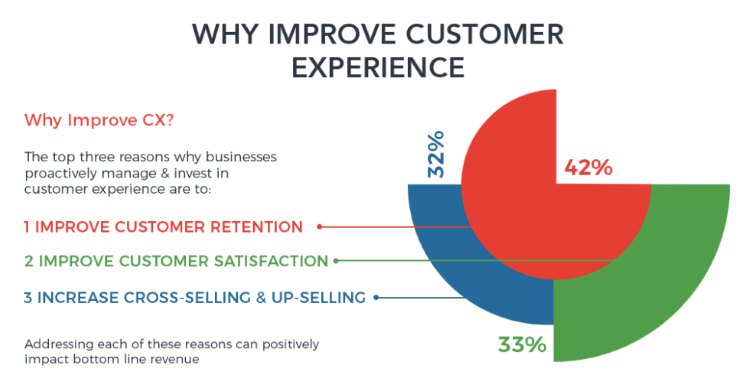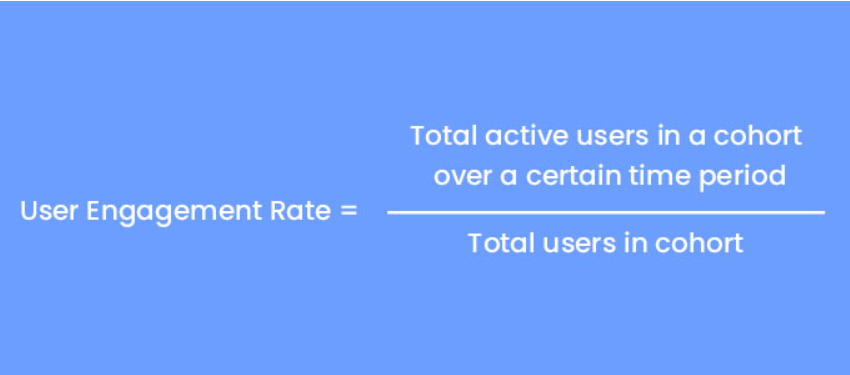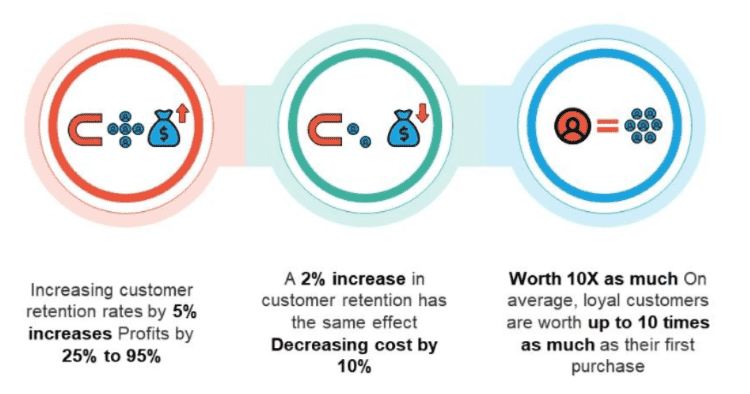REVE Chat Version 4.0
Version 4.0
Upgrade your website to an IM platform & beyond
Blending the strengths of IM and Live Chat
Upgrade your website to an instant messaging platform and beyond


Customers are more connected than ever. They also feel more empowered than ever.
With easy access to all types of information — such as what to buy, where to buy, how much to pay, etc. — you can expect them to dictate terms in the market and have their way as well.
And if your business wants to keep pace, it must strive to get customer insights so that it can better understand its target audience behavior and prepare the right responses in return.
This is where customer analytics help — it’s the data from various touchpoints of customer relationships that can give you details about customer engagement and experiences.
Analytics is always a great tool to know customers inside out improve efforts to marketing, support, and sales.
The better you understand customers’ buying habits and lifestyle choices, the more successful you will become at presenting relevant offers at a key juncture.
To get a clearer view of analytics and KPIs, you can read some of our posts:
Customer analytics is the systematic examination of customer information and behavior with the purpose to identify, attract and retain the right prospect. It’s also the use of raw data to analyze and understand the composition, customer needs, and satisfaction of the consumer.
The idea behind using customer journey analytics is to segment buyers into relevant groupings and understand behavior to determine general trends and develop strategies for targeted marketing.
Thanks to customer analytics, it’s always easy for businesses to attract customers rather than alienate them, and also ensure great experiences across touchpoints.
Customer analytics can also mean –
The purpose of these analytics is to understand customer experience trends and also to get the raw data to form strategies, products, and services that will help customers engage with your business.
Irrespective of the industry, the goal of customer data analytics is the same everywhere — get an accurate view of customers at various stages of the journey and identify the high-value ones for engagement.
With a large amount of accurate data, it would always be easy for a business to get an insight and realize its revenue, sales targets easily.
The impact of customer analytics on corporate performance is huge, says Mckinsey’s report.
The use of customer behavior analytics can greatly impact various processes like pricing, promotion, and management. By using customer data, businesses can bolster their diverse customer-centric strategies and gain a holistic view of the customer. It will also help devise the right acquisition, retention as well as engagement strategies for the customers.
A business stands to gain enormously when it leverages customer analytics in the decision-making process.
Customer analytics are great tools for businesses to understand customers and then tailor services accordingly. In fact, companies that use analytics report 115% higher ROI.
From buying journey to lifestyle choices, the analytics gives an insight into everything in regard to what customers did and what you should do to target them at the right time.
There are four main categories of customer analytics and knowing each one of them can prepare businesses for challenges in the market.
The customer journey is always quite complex. Mapping it requires a lot of effort as there are various stages and touchpoints involved. And if there is no data, your business will find it hard to quantify, classify and categorize customers. For that reason, you should know the successful use cases for customer analytics so that you can benefit from them.
There are different types of client analytics and using them accurately can improve how your track people successfully.
Let’s dive into each of them.
Customer experience analytics is a form of descriptive analytics that gives insight into how your customers feel when they interact with a brand. They can prove a great tool to drive revenue.
The purpose of using these customer behavior analytics is to ask or know “what happened” during the customer journey.
Using them, it’s easy to summarize raw data into easy-to-understand and simple-to-explain concepts, which in turn, can help improve customer experience in the desired manner.

Having a complete understanding of the customer journey is always crucial to providing a better customer experience. Since the journey is complex with various stages and multiple touchpoints, the focus should always be on knowing the complete customer’s interactions with the business.
From knowing the purchase history to product usages to shopping cart abandonment, there’s always a lot to know. The use of customer engagement tools can help you a lot — right from the initial research to the actual purchase and beyond. This is why customer interaction analytics contain a mix of data points from different interactions.
Customer data alone is never enough when it comes to devising a successful customer experience strategy. Your business also needs behavioral data from multiple channels to take timely actions and deliver personalized marketing messages.
This is where customer engagement analytics help – they give actionable insights that help organizations respond to customer needs in a timely manner and increase sales.
The purpose of customer engagement analytics is to help improve customer engagement by analyzing structured and unstructured customer data achieved from various channels.
The data sets obtained from these analytics can prove very helpful in first understanding customer engagement examples and then boosting customer experience initiatives or driving marketing activities.

A good experience can pave the way for long-term happy customers. To deliver such kinds of experience, you first need to have a good understanding of your customers.
This is where customer loyalty analytics can help as it can give an insight into buyers and then you can tailor an experience that matches the expectations.
If you want to develop customer-centric marketing strategies or aim to gain answers about customer behavior, you can always turn to customer loyalty analytics for the same.
You can easily understand whether customers buy products from your brand or do they leave positive reviews etc.
To get a better view, read our blog on 10 Actionable Strategies to Increase Customer Loyalty
Acquiring new customers is as crucial as retaining the ones you already have. Since retaining customers costs a fraction of winning new ones, it always becomes important for organizations to know what makes customers stay or leave.
Customer retention analytics can help you examine the data to understand the reasons and factors responsible for customer retention and churn. These data sets are very helpful in understanding what makes customers stick and then also in reducinging churn.
Read our blog here 15 Effective Customer Retention Strategies from Top Brands to get a better grasp of the topic.
One of the key components of customer retention analytics is to use statistical techniques that look at past data and predict future trends. It also involves tracking customers over a set period of time.
Using customer retention analytics, it will be easy to identify sources and rates of customer churn among your customer segments. It will also help understand customer engagement with your product which can contribute to avoiding customer loss and maximizing customer potential.

For a business, it’s always important to know who your best customers are. And when you have that data, the next step is to know how to retain those customers. You also need to know the expected benefits that the customer might bring during their lifetime stay.
The Customer Lifetime Value (CLTV) is thus a key metric that helps you understand how much. revenue to expect from a single customer throughout their stay with your business.
Once you have known CLV for each customer, you can always utilize that metric effectively and optimize the marketing and sales accordingly.
Similarly, you can also segment this metric to know the more valuable customers, and then you can target them with relevant marketing campaigns.
If the CLTV is decreasing over a period of time, it means you have an issue with repeat customers.
And if your CLTV is lower than the customer acquisition cost, it shows you’re overspending on getting the customer back.
Read our blog on 10 Proven Ways to Build Life-Long Customer Relationships
Customers matter a lot and what they say matters no less. They often talk about businesses whether positively or negatively. And it would be a mistake not to track what they say and where.
The idea behind tracking customer opinion is to know their opinions and expectations so that you can always adjust your marketing and target them with the right offers.
Anything that gives you a peek into the customer’s thoughts is always a great piece of data, so you should always need to focus on listening to that.
Every industry needs customer data to understand the behavior and future purchasing patterns of their customers. With customer analytics, it becomes easy to understand the kind of engagement provided and the kind of offers to be made available in the future.
The role of analytics is vital for each industry where businesses aim to improve online customer service and drive conversion.
Analytics can provide banks with more power and flexibility in terms of ensuring optimal performance and taking key decisions where timing is important. Data sets can have a positive impact in areas such as calculating value, compliance, fraud, and NPA monitoring.
Ecommerce analytics can help gather data from all areas with a direct impact on your online store. This information can well be used to understand various ecommerce metrics such as a pageview, bounce rates, etc which will inform about the consumers’ behavior and drive more online sales
Customer analytics can help your gather data about your customers and create a customer profile for the growth of your real estate business. The data can be used to make informed decisions about customer buying habits, retention, acquisition.
The retail industry makes use of customer analytics to identify the target audience and ensure the right offers based on real data and indicators. The data can prove handy in identifying segments and potentially even entire markets so that a bigger prospect is available.
For any business, it’s always important to learn/know about the people who visit your site.
With REVE Chat’s live chat platform, you can get visitor analytics and see where visitors come from, you can know your most popular pages, and also get in-depth insights and stats. You can use this information to understand the behavior of the site visitors and start a proactive chat to improve the chances of sales.
Similarly, REVE Chat’s chatbot can help you know your customers in detail and make better decisions. Some of the important chatbot metrics that you can evaluate your chatbot performance include the total number of users, bounce rate, interaction rate, and fallback rate (FBR).
Analytics has a big role to play in understanding customers, their tastes, and preferences in a detailed manner. And if you’re able to leverage that data well, it will always be easy for your business to achieve the kind of growth and success it deserves or anticipates.
To get predictive customer analytics for your business, use REVE Chat’s live chat and chatbot platform.
If you use these platforms, you will get an insight into your customer’s choices, and the data can help you prepare for future challenges with ease. And once you know the customer well, you can always serve them well.
Start a 14-day free trial, no credit card required
Stay updated with the latest trends and ideas we share
What happens when your business doesn’t have a well-defined lead management process in place? You might then struggle to track,...
In your business, you need information about your customers’ pain points, preferences, requirements, and most importantly their feedback. Now think this...
How does the future look like to you with Artificial Intelligence shaping most of our day-to-day tasks? Sometimes it feels...


